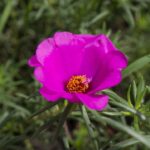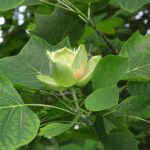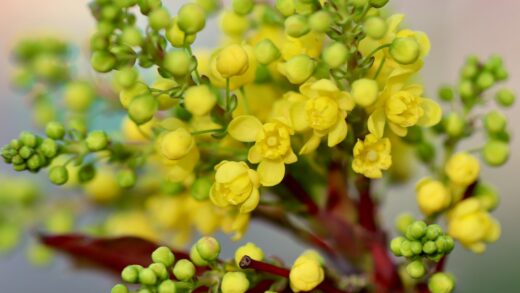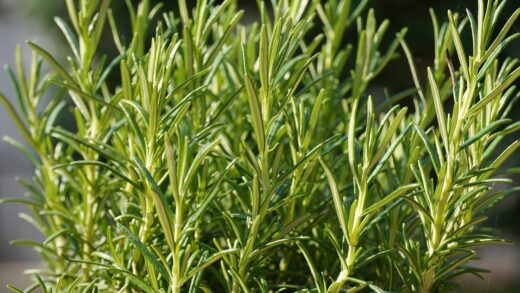Pruning and cutting back firethorn

Pruning is one of the most important maintenance tasks for a Pyracantha, allowing you to shape the plant, control its size, and significantly enhance its ornamental value. This thorny, vigorous shrub responds exceptionally well to cutting back, making it suitable for a variety of garden uses, from a formal, tightly clipped hedge to a magnificent, free-flowing specimen trained against a wall. Understanding the correct techniques and, crucially, the right timing for pruning is key to ensuring you do not sacrifice the very features you are trying to promote: the beautiful spring flowers and the spectacular autumn berries.
The primary goal of pruning firethorn is often to maintain a desired shape and to keep its vigorous growth in check, especially when it is grown as a hedge or an espalier. Without regular trimming, Pyracantha can quickly become a large, unruly tangle of thorny branches. Pruning not only keeps the plant tidy but also encourages a denser habit, which is particularly important for hedging. Furthermore, selective pruning can improve air circulation through the plant, which is a key preventative measure against fungal diseases like scab and fire blight.
The timing of pruning is absolutely critical. Pyracantha produces its flowers, and subsequently its berries, on wood that grew in the previous season. Therefore, if you prune the shrub heavily in the winter or early spring before it flowers, you will be cutting off most of the potential flowering wood, resulting in a year with very few flowers and almost no berries. This is a common mistake that leaves many gardeners wondering why their firethorn is not performing.
To avoid this outcome, the main structural pruning should be carried out immediately after the plant has finished flowering, which is typically in late spring or early summer. At this point, you can clearly see which branches have flowered, and you can shorten these shoots while still leaving plenty of time for the plant to produce new growth over the summer. It is on this new growth that the flower buds for the following year will form, and the berries for the current year will develop on the older wood that remains.
Pruning techniques for different forms
For an informal, free-standing Pyracantha shrub, the pruning approach can be quite relaxed. The main aim is to maintain a healthy framework and an attractive shape. After flowering, start by removing any dead, diseased, or damaged branches, cutting them back to a healthy part of the plant. Also, look for any branches that are crossing or rubbing against each other, as this can create wounds that are potential entry points for disease; remove one of the offending branches. You can then shorten any overly long or wayward shoots to maintain a balanced overall shape.
More articles on this topic
When growing Pyracantha as a formal hedge, a more disciplined pruning regime is required. The main trim should still be done after flowering. You can use hedge trimmers or shears to cut the sides and top of the hedge to the desired shape and size. Following this main prune, the hedge will likely produce new shoots throughout the summer. To keep it looking neat and tidy, you may need to give it a few light trims during the growing season, simply snipping off the new growth that extends beyond the desired hedge line.
Training a firethorn as an espalier against a wall or fence is a fantastic way to display its flowers and berries. This involves creating a permanent framework of main branches that are tied to a support structure of horizontal wires. Each year, after flowering, you should prune back all the side shoots that have grown from this main framework, cutting them to within two or three leaves of the main branch. This encourages the development of short, fruiting spurs along the framework, resulting in a stunning two-dimensional display of berries.
For very old, overgrown, and neglected Pyracantha shrubs, a hard renovation prune may be the best course of action. This is a drastic measure that should be carried out in late winter or early spring, just before new growth starts. It involves cutting back all the main stems to within 30-50 centimeters of the ground. While the plant will look bare initially, its inherent vigor means it will almost certainly respond by sending up a flush of strong new shoots from the base. It will take a couple of years to re-establish the framework and for flowering and fruiting to resume, but this can give a new lease of life to an old plant.
Tools and tips for success
Using the right tools will make pruning firethorn a much safer and more effective task. Due to its formidable thorns, wearing a sturdy pair of gardening gloves, preferably gauntlet-style ones that protect your forearms, is essential. Eye protection is also highly recommended, as a whipping branch can easily cause a serious eye injury. For smaller branches, a sharp pair of bypass secateurs will make clean cuts. For thicker stems, a pair of long-handled loppers or a pruning saw will be necessary.
More articles on this topic
Always ensure your pruning tools are sharp and clean. Sharp blades make clean cuts that heal more quickly and are less susceptible to disease infection. Blunt tools can crush and tear the plant’s tissues, creating ragged wounds. It is also good practice to clean your tools with a disinfectant, such as rubbing alcohol or a dilute bleach solution, especially after cutting out any wood that looks diseased. This prevents the accidental spread of pathogens from one part of the plant to another, or from one plant to another in the garden.
When making a pruning cut, the placement is important. You should aim to cut back to just above an outward-facing bud. This will encourage the new shoot to grow outwards, away from the center of the plant, promoting a more open structure and better air circulation. Avoid leaving long stubs of wood above a bud, as these can die back and become a potential site for rot or disease to enter the plant.
After pruning, it is a good time to give the plant some care to help it recover and put on new growth. Ensure it is well-watered, especially if the weather is dry. Applying a top-dressing of compost or a balanced granular fertilizer around the base of the plant can also be beneficial, providing the nutrients it needs to fuel the new growth on which future flowers and berries will depend. This simple aftercare helps to ensure your pruning efforts are rewarded with a healthy and beautiful shrub.



















